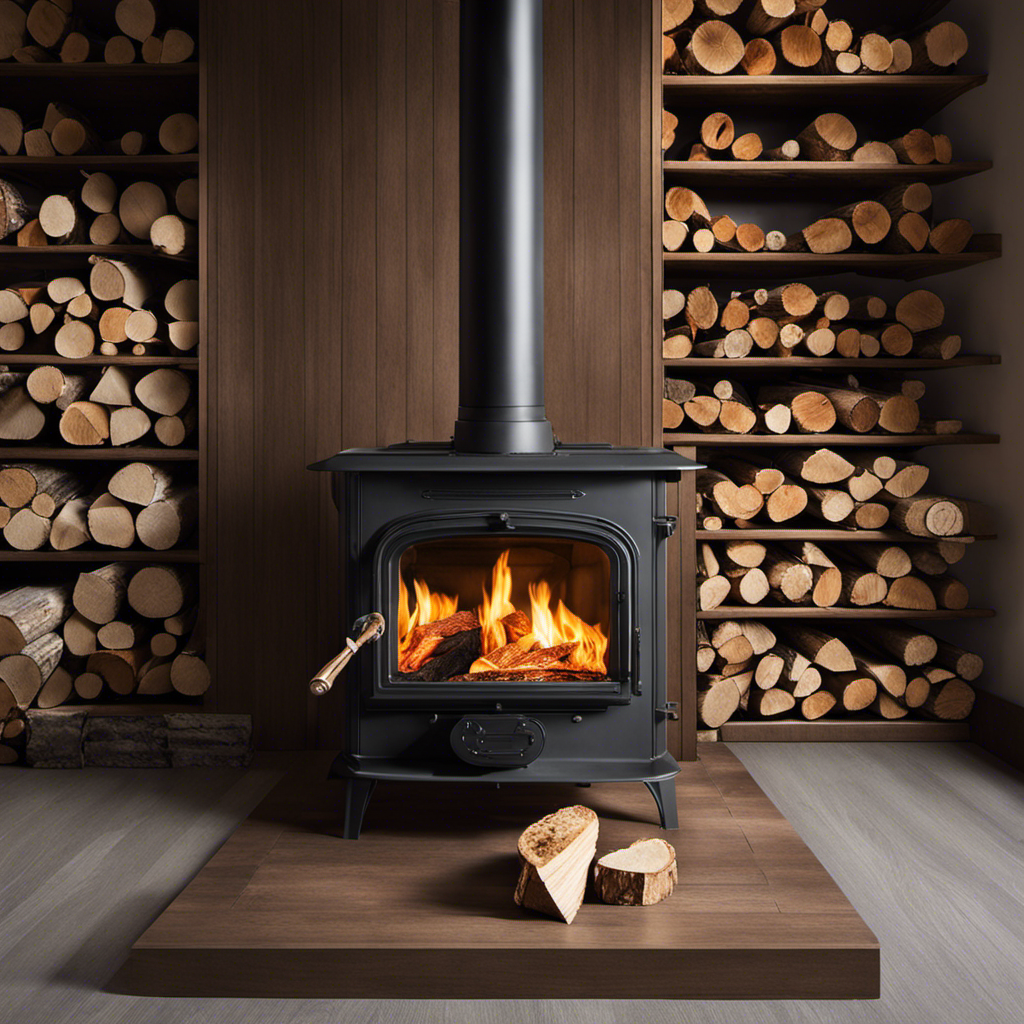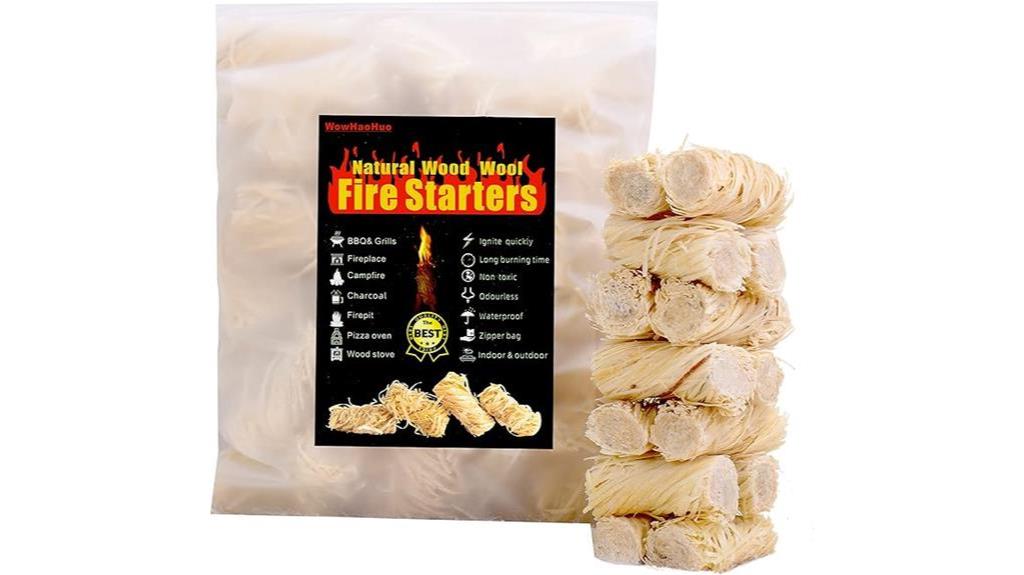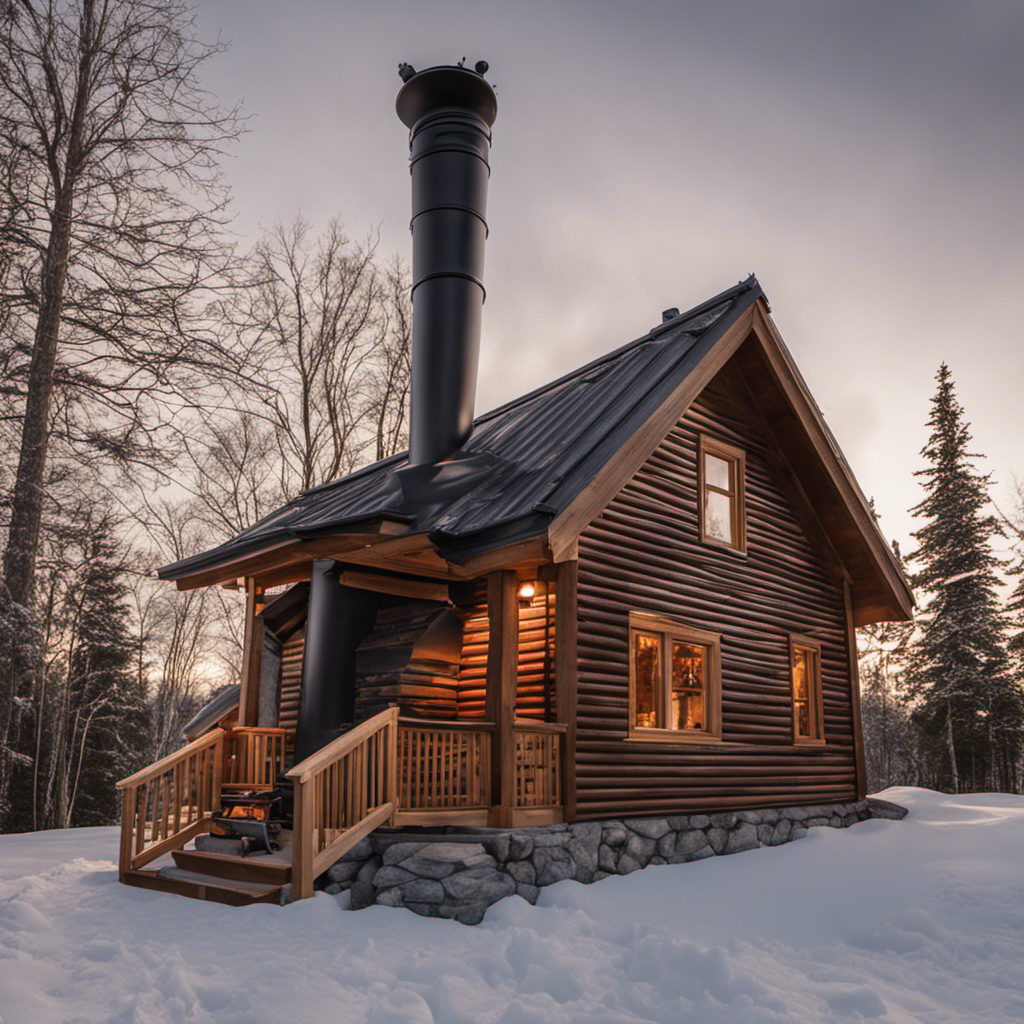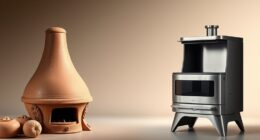I have come across a theory that has the potential to greatly improve the efficiency of your wood stove.
By following a few simple steps, you can optimize its performance and maximize heat output.
Understanding the importance of proper ventilation, choosing the right wood, and mastering firebuilding techniques are just a few of the key factors.
With strategic placement and regular maintenance, you can ensure your wood stove operates at its full potential.
Let’s dive into the details and start increasing the efficiency of your wood stove today.
Key Takeaways
- Opening a window improves air circulation and increases the efficiency of a wood stove.
- Using seasoned hardwood with low moisture content maximizes stove efficiency.
- Proper firebuilding techniques, such as using dry kindling and arranging firewood for optimal air circulation, result in minimal smoke and increased efficiency.
- Strategic placement of the wood stove centrally in a room ensures better heat distribution and overall comfort.
Understanding the Importance of Proper Ventilation
As I learn about the importance of proper ventilation, I realize that opening a window can greatly improve the efficiency of my wood stove. Improving air circulation is essential for ensuring that the wood stove operates at its best.
When the stove burns wood, it produces smoke, gases, and other byproducts that need to be properly vented out of the room. Opening a window allows fresh air to enter, creating a flow of air that helps in the combustion process and prevents the buildup of harmful gases.
Additionally, utilizing chimney dampers can further enhance ventilation. By adjusting the damper, I can control the amount of air entering and exiting the chimney, optimizing the burn rate and increasing efficiency.
Proper ventilation not only improves the performance of the wood stove but also ensures a safer and healthier living environment.
Choosing the Right Wood for Optimal Efficiency
I always make sure to choose the right wood for optimal efficiency when using my wood stove. The type of wood you use can greatly affect the performance and efficiency of your wood stove. Here are three key factors to consider when selecting the right wood:
-
Seasoned Hardwood: It’s important to use seasoned hardwood as fuel for your wood stove. Seasoned wood has been dried for at least six months, reducing its moisture content. This results in a cleaner and hotter burn, maximizing the efficiency of your stove.
-
Moisture Content: The moisture content of the wood plays a critical role in how efficiently it burns. Wood with a high moisture content will produce more smoke and less heat, leading to decreased efficiency. Aim for wood with a moisture content of around 20% for optimal performance.
-
Wood Species: Different wood species have varying energy content and burn characteristics. Hardwoods like oak and maple are denser and burn longer, providing a steady heat output. Softwoods like pine and fir burn faster but may require more frequent refueling.
Mastering the Art of Firebuilding Techniques
Using proper kindling and stacking techniques is essential for mastering the art of firebuilding techniques.
When it comes to firewood storage, it’s crucial to keep the wood dry and well-ventilated. Moisture in the wood can lead to excessive smoke production and decreased efficiency.
To minimize smoke production, start by selecting seasoned firewood that has been properly dried for at least six months. Next, arrange the firewood in a way that allows for proper airflow. Stacking the wood in a crisscross pattern or using a log cabin style stack can help promote air circulation.
Additionally, using small, dry kindling to start the fire will ensure a faster ignition and reduce smoke.
With these techniques in mind, you can enjoy a well-built fire with minimal smoke and optimal efficiency.
Maximizing Heat Output With Strategic Placement
While strategically placing my wood stove, I can maximize heat output by ensuring it’s positioned in a central location in the room. This strategic positioning allows for better heat distribution throughout the space, ensuring a comfortable and warm environment.
Here are three key factors to consider when strategically positioning a wood stove:
-
Clearance: It’s crucial to maintain proper clearance between the stove and any combustible materials. This not only ensures safety but also allows for efficient heat transfer. Check the manufacturer’s guidelines for the recommended clearance distances.
-
Airflow: Placing the wood stove in a central location allows for optimal airflow. This ensures that heat is evenly distributed throughout the room, eliminating cold spots and maximizing comfort.
-
Heat Reflection: Consider the surrounding surfaces when positioning the wood stove. Materials like brick or stone can absorb and radiate heat, enhancing the overall heat distribution in the room.
Implementing Regular Maintenance and Cleaning Practices
To ensure optimal performance, it’s important to implement regular maintenance and cleaning practices, such as cleaning the chimney and inspecting the stove for any signs of wear or damage.
Safely handling wood ash and preventing creosote buildup are key aspects of maintaining a wood stove.
Firstly, when handling wood ash, it’s crucial to remember that it can remain hot for several days after the fire has been extinguished. Always use a metal container with a tight-fitting lid to store and dispose of ash. This prevents accidental fires and keeps your surroundings safe.
Secondly, creosote buildup is a common issue in wood stoves. It’s a highly flammable substance that accumulates in the chimney over time. To prevent this, regularly clean the chimney using a chimney brush to remove any creosote deposits.
Additionally, inspect the stove for any signs of wear or damage, such as cracks or loose components, and address them promptly to maintain the stove’s efficiency and safety.
Frequently Asked Questions
Are There Any Safety Precautions That Need to Be Taken When Using a Wood Stove?
Fire safety is crucial when using a wood stove. It is essential to follow proper ventilation guidelines to prevent the buildup of dangerous gases. Regular maintenance and inspection of the stove are also important for safe operation.
How Can I Determine the Appropriate Size of Wood Stove for My Space?
To determine the appropriate size of a wood stove for my space, I must consider factors such as the square footage, ceiling height, insulation, and climate. These calculations ensure optimal heating efficiency and prevent overheating or underperformance.
Can I Use Any Type of Wood in a Wood Stove, or Are There Specific Types That Are More Efficient?
I can use different types of wood in my wood stove, but there are specific types that are more efficient. The best wood for wood stoves is hardwood, such as oak or maple, as it burns longer and produces more heat.
Is It Necessary to Have a Chimney for Proper Ventilation When Using a Wood Stove?
Yes, it is possible to use a stovepipe instead of a chimney for proper ventilation when using a wood stove. Ventilation is crucial to prevent smoke buildup and ensure efficient burning.
Is It Possible to Retrofit an Existing Fireplace to Be More Efficient With a Wood Stove Insert?
Yes, it is possible to retrofit an existing fireplace to be more efficient with a wood stove insert. This involves installing the insert into the fireplace, which helps to increase heat output and reduce energy waste.
Conclusion
In conclusion, ensuring the efficiency of a wood stove requires a combination of factors. These factors include proper ventilation, choosing the right wood, mastering firebuilding techniques, strategic placement, and regular maintenance.
By following these guidelines, you can optimize heat output and make the most of your wood stove. Remember, with a little effort and attention, your wood stove can become a reliable and comforting source of warmth, evoking nostalgic feelings of coziness and relaxation.











